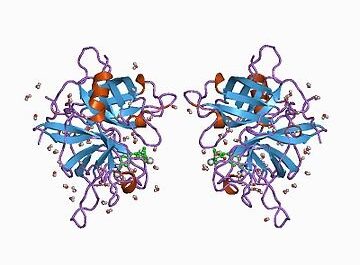Targeted drug delivery refers to a system that is designed to deliver therapeutic agents like drugs, enzymes or genes specifically to diseased sites in the body while avoiding healthy tissues and organs. This helps maximize the concentration of drug in diseased tissues and minimize adverse effects to healthy tissues leading to improved therapeutic outcomes. Some key benefits of targeted drug delivery include:
Enhanced Bioavailability at Disease Site
Targeted drug delivery helps enhance the concentration of active pharmaceutical ingredients (APIs) at the site of action by bypassing other body parts. Traditional delivery systems lead to lower concentrations of drugs at target sites due to systemic distribution. Targeted delivery prevents drug degradation and elimination during circulation, ensuring higher bioavailability precisely where needed.
Reduced Systemic Side Effects
By localizing drug action only at diseased sites, toxic effects to other healthy organs are minimized. This helps reduce adverse reactions commonly associated with conventional therapies. Targeted delivery shields healthy tissues from unwanted drug exposure leading to an improved therapeutic index.
Improved Patient Compliance
With few side effects, patients find Targeted Drug Delivery therapies safer and more tolerable than traditional options. This enhances treatment adherence and quality of life. Patients are able to complete recommended drug intake duration without interruptions.
Mechanisms of Targeted Drug Delivery
There are various targeted delivery approaches designed to deliver drugs specifically to pathological sites:
Ligand-mediated targeting: Drugs are conjugated with ligands like monoclonal antibodies, growth factors, peptides etc. that bind to receptors overexpressed on diseased cell surfaces for active targeting. This facilitates receptor-mediated endocytosis governed internalization.
Site-specific targeting: Certain pathologies arise from anatomical sites which can be exploited. For example, oral, pulmonary or ocular routes target gastrointestinal, lung or eye diseases respectively based on site of administration.
Environmental targeting: Diseases create environmental conditions like lowered pH, hypoxia etc. that can be leveraged. pH-sensitive or redox-responsive nanocarriers degrade specifically under pathological conditions, releasing payload.
Cell-specific targeting: Targeting intracellular events by modification for specific uptake by diseased cell types like cancer cells. Examples are cell-penetrating peptides or folic acid conjugates selectively taken up by tumor cells.
Targeted Drug Delivery for Cancer Treatment
Cancer has emerged as one of the leading causes of death worldwide. While chemotherapy is a mainstay of cancer treatment, its efficacy is limited by severe side effects and development of acquired resistance over time. Targeted drug delivery approaches hold promise to revolutionize cancer management.
Antibody-Drug Conjugates (ADCs)
ADCs work by attaching monoclonal antibodies carrying toxic payloads via a linker to receptors overexpressed on cancer cell surfaces. The ADC-antibody complex binds specifically to cancer antigens triggering receptor-mediated endocytosis. Once internalized, linker cleavage releases the cytotoxic drug exclusively in target cancer cells. Examples are Kadcyla for HER2-positive breast cancer and Besponsa for acute lymphoblastic leukemia.
Ligand-Targeted Nanocarriers
Nanoparticles carrying anti-cancer drugs can be functionalized with ligands like folic acid, transferrin or hyaluronic acid relying on their overexpression on cancer cells. The ligand-nanocarrier complex binds selectively to cancer cell surface receptors for internalization and drug release. This helps circumvent multi-drug resistance and achieve better penetration of solid tumors with fewer side effects. Examples are Doxil liposomes and Abraxane albumin nanoparticles.
Tumor Microenvironment-Responsive Delivery
Certain conditions in tumor microenvironment like acidic pH, hypoxia or elevated glutathione can be leveraged. Smart nanocarriers incorporating pH-sensitive or redox-responsive linkers degrade specifically in the tumor releasing drugs intracellularly. Only in tumors where conditions are favorable, avoiding premature release in normal tissues. Examples are poly(β-amino ester) nanoparticles and redox-sensitive liposomes.
Gene Therapy Vectors
Viral vectors like adenovirus, retrovirus and adeno-associated virus carrying tumor suppressor genes can be surface-modified for tumor-selective delivery. Ligand functionalization governs their binding and cellular uptake specifically by tumor tissues and not normal cells. This helps achieve local overexpression of therapeutic genes selectively in cancerous regions minimizing risks. Promising vectors are in various stages of clinical trials.
In summary, the ability to selectively deliver therapeutic agents only in diseased sites is revolutionizing cancer treatment outcomes. By enhancing bioavailability, minimizing systemic toxicity and avoiding drug resistance mechanisms, targeted delivery strategies usher new hope for tailoring personalized cancer therapy regimens. Ongoing research on novel material formulations and ligand conjugation is sure to spawn more clinical successes in the coming years. Targeted delivery undoubtedly holds promise for a future of more effective, compliance-friendly and safe cancer management solutions.
Note:
1. Source: Coherent Market Insights, Public sources, Desk research
2. We have leveraged AI tools to mine information and compile it




